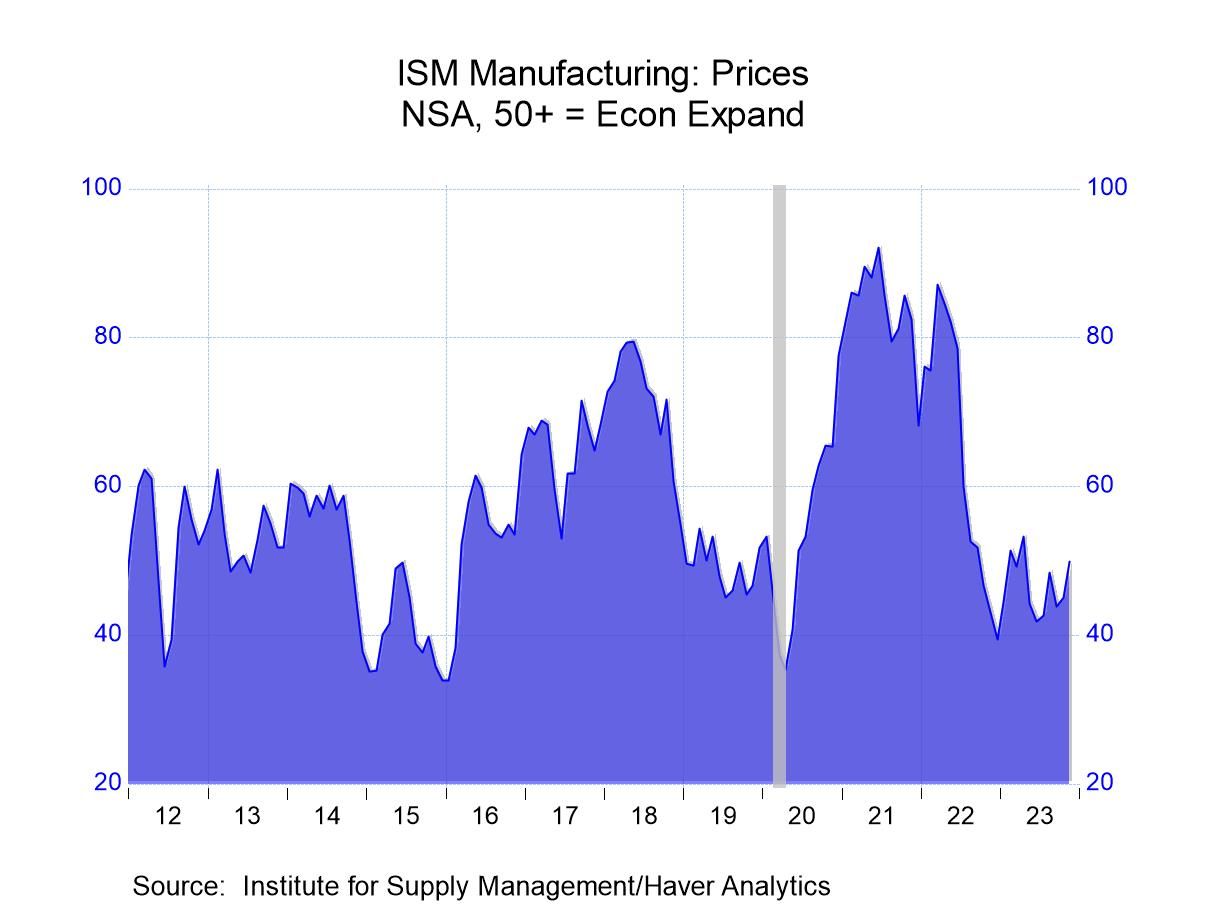U.S. ISM Manufacturing PMI Holds Steady in November
by:Tom Moeller
|in:Economy in Brief
Summary
- Index remains below expansion level, where it’s been for one year.
- Component movement is mixed.
- Prices index strengthens to seven-month high.


The Purchasing Managers Index of activity in the manufacturing sector was stable at 46.7 in November after falling from 49.0 in September, according to the Institute for Supply Management. Remaining below 50, the figure has indicated contraction in U.S. manufacturing sector activity since November 2022. The index peaked at 61.9 in May 2021. A November reading of 47.7 had been expected in the Action Economics Forecast Survey.
Movement amongst the component series was mixed last month. The new orders index rose to 48.3 in November from 45.5 in October. It remained up from a low of 42.6 in May. Twenty percent (NSA) of survey participants reported higher new orders while 27.5% reported a decline. The inventory series rose to 44.8 from 43.3 as 13.8% of respondents indicated inventory accumulation but 26.5% reported decline.
Offsetting these gains, the production index declined to 48.5 last month from 50.4 in October. It was the lowest level since July and the first in four months to indicate declining overall activity. Eighteen percent of respondents reported higher production while 19.5% reported decline. The employment reading dropped to 45.8 from 46.8, again indicating a decline in factory sector payrolls. The index stood below its May high of 51.4. Nine percent of respondents reported more jobs while 19.4% reported fewer. The supplier delivery series weakened to 46.2 in November from 47.7 in October. The series remained higher than a low of 43.5 in May.
The prices index rose to 49.9 (NSA) last month from 45.1 in October. It was the highest level since April, up from a June low of 41.8. The index peaked at 92.1 in June 2021. Sixteen percent of respondents reported higher prices while 16.3% reported price declines.
In other series, the export index retreated to 46.0 in November from 49.4 in October. It remained below the most recent high of 57.1 in February 2022. The imports series weakened to 46.2 from 47.9 and remained below the most recent high of 49.9 in April. The order backlog index dropped sharply to 39.3 from 42.2 in October, well below its high of 70.6 in May 2021.
The ISM figures are based on responses from over 400 purchasing executives from 20 industries, which correspond to their contribution to GDP in 50 states.
These data are diffusion indexes where a reading above 50 indicates expansion. The figures from the Institute for Supply Management can be found in Haver's USECON database; further detail is found in the SURVEYS database. The expectations number is available in Haver's AS1REPNA database.
Restoring Price Stability from John C. Williams, President & CEO, Federal Reserve Bank of New York can be found here.


Tom Moeller
AuthorMore in Author Profile »Prior to joining Haver Analytics in 2000, Mr. Moeller worked as the Economist at Chancellor Capital Management from 1985 to 1999. There, he developed comprehensive economic forecasts and interpreted economic data for equity and fixed income portfolio managers. Also at Chancellor, Mr. Moeller worked as an equity analyst and was responsible for researching and rating companies in the economically sensitive automobile and housing industries for investment in Chancellor’s equity portfolio. Prior to joining Chancellor, Mr. Moeller was an Economist at Citibank from 1979 to 1984. He also analyzed pricing behavior in the metals industry for the Council on Wage and Price Stability in Washington, D.C. In 1999, Mr. Moeller received the award for most accurate forecast from the Forecasters' Club of New York. From 1990 to 1992 he was President of the New York Association for Business Economists. Mr. Moeller earned an M.B.A. in Finance from Fordham University, where he graduated in 1987. He holds a Bachelor of Arts in Economics from George Washington University.






